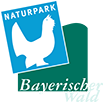Natural wonders on the Großer Arber
Protected areas in the Arber region
The dense juxtaposition of these magnificent natural phenomena makes the Arber region a priceless natural asset. High waterfalls, mysterious peat bogs, glacial lakes, steep-sided cirques, and primeval-type forests give this unspoilt area an unmistakable character. Large area of it are designated nature reserves (NSG).
The Arbersee lakes – Ice Age relicts
The two Arbersee lakes are captivating relicts of glacial activity from the ice age which ended around 10,000 years ago. Since then, plants have conquered the open water by pushing their shoots into the lake and forming peat bogs. Since the damming of the Arbersee lakes during timber drifting, silt depositions have floated on the water’s surface.
Kleiner Arbersee
Age: approximately 10,000 years old
Altitude – 918 m
Maximum depth – 9 m
Lake area – 9.6 ha
Water surface area – 6.36 ha
NSG – since 1959
NSG area – 404 ha
Großer Arbersee
Age – approximately 10,000 years old
Altitude – 935 m
Maximum depth – 16 m
Lake area – 9.5 ha
Water surface area – 7.72 ha
NSG – since 1939
NSG area – 157 ha
Highest waterfalls
The highest waterfalls in the Bavarian Forest can be found in the Rißloch reserve near Bodenmais. The combined volume of water carried along by a number of streams has created the deepest and steepest gorge of the Arber region. In the upper section of the gorge, the torrent has gouged the landscape to a depth of around 260 m over a distance of just 1.6 km. The waterfalls offer visitors an impressive natural spectacle, especially after snow melt and heavy rainfall.
Capercaillie reserve
The mountain forests throughout the Arber region are a refuge for the rare and strictly protected capercaillie. Disturbing these birds in winter, during courtship or in the breeding and rearing season can be life-threatening to the capercaillie. Do not stray from the marked paths, designated ski and snowshoe routes or cross-country skiing trails in the capercaillie reserve during the period from 1 November to 30 June.
NATURA 2000
The Arber region also contains the “Großer and Kleiner Arber with Arbersee Lakes” fauna-flora-habitat (FFH) area, covering 2,322 hectares, and the “Großer and Kleiner Arber with Schwarzeck” bird reserve covering 3,567 hectares. Near Bodenmais, the “Silberberg” FFH area is home to one of the largest winter roosts for bats in all of Central Europe. These areas are part of the European Natura 2000 network of protected areas.
Which is the largest here?
Originally, the Großer Arbersee was larger than the Kleiner Arbersee. But since both lakes were dammed, the smaller lake is now the larger of the two. A little bit of maths – How many square metres larger are the “floating islands” on the Kleiner Arbersee than on the Großer Arbersee?
(Tip – Subtract the water area from the lake area to get the size of the “floating islands”). The solution is hidden in the picture.
